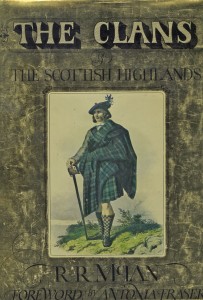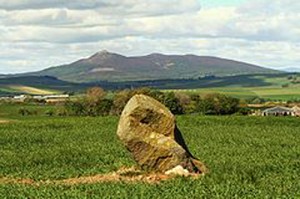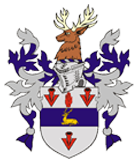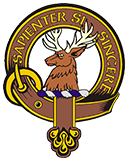History of Clan Davidson

Dust Jacket for the 150th Anniversary Reproduction of the R R MacIan Clans of the Scottish Highlands (text on P.2)
The historian of Clan Chattan above referred to offers another theory to account for the comparative disappearance of Clan Davidson from the historic page, by pointing out that two of the name were concerned in the murder of Lachlan, the fourteenth Mackintosh chief, in 1524. One of these two, Milmoir MacDhaibhidh, was the chief’s foster-brother, but believed that Mackintosh had helped to destroy his prospects of marrying a rich widow, and accordingly, on 25th March, along with John Malcolmson and other accomplices, fell upon the chief and slew him while hunting at Ravoch on the Findhorn. For this deed the three assassins were seized and kept in chains in the dungeon on Loch.an-Eilan till 1531, when, after trial, Malcolmson was beheaded and quartered, and the two Davidsons were tortured, hanged, and had their heads fixed on poles at the spot where they committed the crime. Mr. Mackintosh also points out that another Davidson, Donald MacWilliam vic Dai dui, conspired with the son of the above John Malcolmson against William, the fifteenth Mackintosh chief in 1550 when the head of that chief was brought to the block by the Earl of Huntly at Strathbogie. The Davidsons who did these things, however, were merely servants and humble holders of the name, and their acts can hardly have brought the whole clan into serious disrepute.

Site of the Battle of Harlaw circa 1411
Another important conflict a Davidson was in was the Battle of Harlaw in 1411. This battle, regarded by many today as the conflict between Highlanders and Lowlanders which killed the expansion of Gaelic influence, was one of the most brutal in Scottish history, becoming known as “Red Harlaw”. Sir Robert Davidson was the Lord Provost of Aberdeen and one of the prominent leaders of the Lowland forces.
That the Davidsons did not altogether cease to play a part in important events is shown by an entry in the Exchequer Rolls (iv. 510) in 1429. This is a record of a distribution of cloth of diverse colors to Walter Davidson and his men by command of the King, and the gift is taken to be possibly an acknowledgment of the loyalty of the Davidson chief and his clan during the Highland troubles of the year.
Later popular tradition has associated the Davidsons with the estate of Davidston in Cromarty, the laird of which is mentioned in 1501 and 1508, in the course of a legal action taken against Dingwall and Tain by the Burgh of Inverness.
In any case, however, the Davidsons had taken root in this neighborhood. In the second half of the seventeenth century Donald Davidson owned certain land and other property in Cromarty. His son, Alexander Davidson, was town clerk of the county town, and his son William succeeded him in the same office. In 1719 this William Davidson married Jean, daughter of Kenneth Bayne of Knockbayne, nephew and heir of Duncan Bayne of Tulloch. The son of this pair, Henry Davidson, born in 1729, made a great fortune as a London West India merchant. His wife was the daughter of a shipmaster of Cromarty, who was son of Bernard MacKenzie, last Bishop of Ross. In 1763, when the estate of Tulloch was sold by the creditors of the ancient owners, the Baynes, it was purchased by Henry Davidson for £10,500, and has since been the seat of his family.

